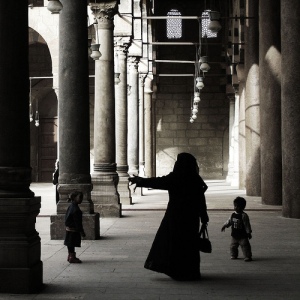A few months ago, I had the opportunity to interview the Al Hijaab team to find out more about their collection and position in the Islamic Fashion Industry. Here’s what they had to say:
First off, tell us a little bit about yourself?
We are a family-run business – my mother, father, brother and sister are all involved with Al-Hijaab. Our aim has been to provide Islamic clothing for fashion conscious Muslims in Britain, giving them a wide variety of designs and motifs. We have been established since Ramadan 2003, opening our first store in Bradford that year. Our website went live soon after, which has been a huge success, Alhamdulillah.
The next step for us is a first of its kind Islamic clothing superstore. We’re actually in the throws of planning the creation of a showroom and retail outlet in Bradford. To give you an idea, we are going to build the store from scratch – digging up soil, laying foundations to displaying stock on the mannequins. It’s a huge project, but it’s also a great challenge for the Al-Hijaab company. My family and I have never been shy of hard graft.
Our aim has always been to provide quality chic Islamic clothing for the wider community. We found a niche in the market and we aimed to fill it with an extensive array of products from places like Dubai, India, Syria, Jordan and Saudi Arabia. Our stock is diverse, elegant, stylish and affordable.
What is your target market and what do you specialize in?

Our target market is people wanting elegant, yet affordable Islamic clothing. Our customers come from all walks of life – students, professionals, bridal parties, elders and new converts to Islam. We have people traveling from as far north as Scotland and as south as London.There’s not a day that goes by, when we don’t have the privilege of meeting someone new, Alhamdulillah – it’s great!
Our specialty lies in offering Islamic clothing for all occasions from Eid celebrations and weddings to office meetings, public events and everyday wear. We sell jilbabs, abayas, hijabs, men’s robes, hats, shawls, accessories, including brooches.We are happy to pair people with the ideal garment for any event. More importantly we provide as much variety in menswear as we do in ladies-wear.
We have a broad variety of both jilbabs and abayas; suitable for formal wear and everyday wear. Our styles are sophisticated, smart, tasteful and chic and can be worn to work or to a special occasion.
Do you see your jilbabs/abayas as being formal wear or everyday wear?
What sets you apart from other online Islamic stores?
I believe our conviction to provide not only affordable clothing but clothing that reflects the times and is for the fashion-conscious sets us apart from our competitors. If you look at our 2008 collection, we have it all, from plain simple jilbabs to premier designer wear. It is stylish, yet tasteful, giving the customer a classy option. We also believe in enhancing the customers shopping experience, doing everything in our power to make sure they’re satisfied with our service. Customer satisfaction is of paramount importance to us.

What should we expect from your new collection?
The theme running through our 2009 collection is primarily sophistication and panache. We are working with embroidery, stone work, pleats, evening dress colors… (Please check the new collection on Al Hijaab’s website)
What are your hopes for Al Hijaab in the future?
Apart from building our exclusive Islamic superstore and showroom, we would like to organize and take part in fashion shows focused on Islamic clothing worldwide. As a company we also want to branch out into supplying Islamic dress for large events like wedding parties.Ultimately, we want to be able to create a brand for ourselves, so when people think about Islamic clothing, the first name on their lips is Al-Hijaab.
Any last words for our readers?
We love what we do and we want to be able to share that experience with our customers. Fundamentally we are here to help them. We want to provide the ultimate shopping experience, matching people up with the best garment, accessory and answering all their queries. The customer is our reason for being here and we will always be loyal to him/her.
You can check Al Hijaab’s
website to see the rest of their new collection. You can also follow them on their Facebook page. Thank you!
By A Hijabee in DC





